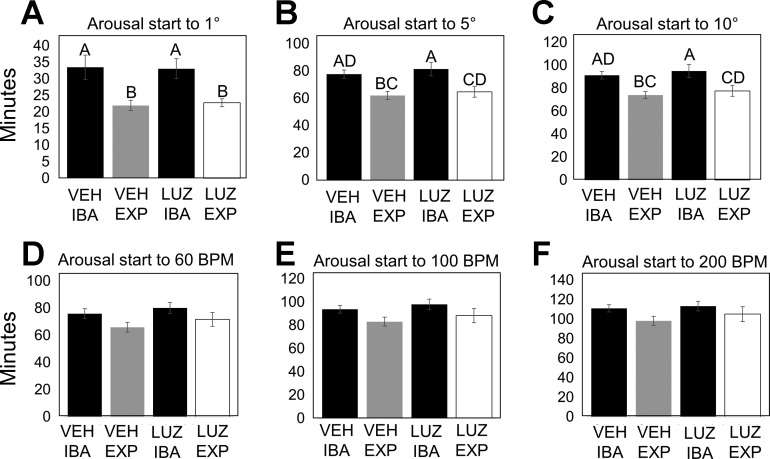Fig. 2.
Timing of arousal during natural and forced arousal from torpor. A–C: timing of body temperature increase from arousal initiation (see methods for details) to 1, 5, and 10°C above torpid body temperature did not differ between experimental groups [vehicle (VEH) or luzindole (LUZ); n = 10 per group], but there was a significant difference between natural and forced arousal. EXP, experimental arousal. D–F: timing of heart rate increase from arousal initiation (see methods for details) to 60, 100, and 200 beats/min did not differ between experimental groups (vehicle or luzindole) or between natural and forced arousal. Data are represented as means ± SE. For the statistical analysis, P values were obtained with an ANOVA. P < 0.05 was considered significant. Any parameter with a significant P value from the ANOVA was then subjected to a Tukey's honestly significant difference (HSD) test. Groups on the same row labeled with different letters are significantly different according to the Tukey's HSD test. Natural IBAs are shown in black, vehicle-treated animals are shown in gray, and luzindole-treated animals are shown in white.

